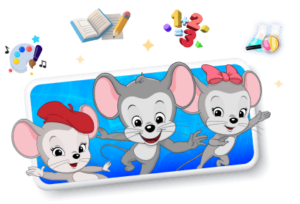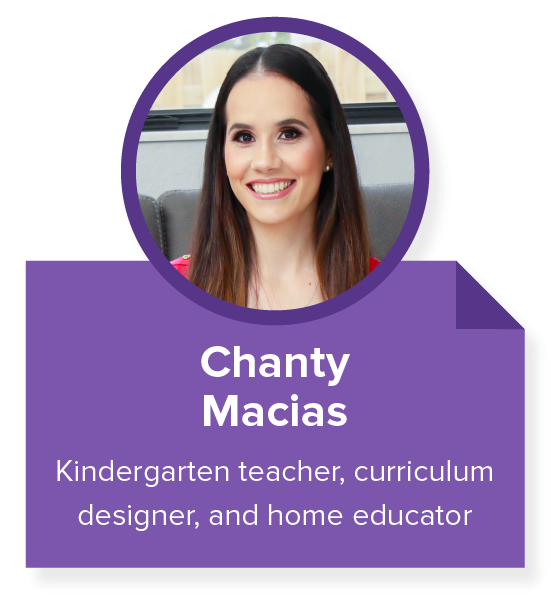
10 Easy Steps to Start Homeschooling
These 10 steps and insights from veteran homeschoolers can help you on your homeschooling journey.
When you first start down the homeschooling path, wading through all the different information can feel overwhelming. Following these 10 steps can help guide you along as you consider your homeschooling options. You’ll also find tips and insights from experienced home educators to provide you with first-hand knowledge about homeschooling.

Step 1: Start the research
Chances are you’re well underway with this part. As you research homeschooling, this might include everything from reading dozens of articles or visiting multiple homeschooling sites. It might also involve talking to other home educators or joining homeschool Facebook groups. During this step, try to soak up as much information you can.
Step 2: Figure out your approach
There are many ways to homeschool, and it might take time to figure out the right approach for your family. Whether you want to utilize charter schools or create a more traditional setup, only you can figure out what is right for you and your family. It’s important to read about different homeschooling methods and talk to those who are actively doing them.
Step 3: Learn the homeschool laws in your state
Home educators will need to comply with their state’s homeschooling laws. These laws can vary by location, especially when it comes to registration and reporting. Check your state’s homeschooling laws for specific details.
Step 4: Discover resources
Home educators need to find the right resources and curriculum to support themselves and their family, sometimes piecing together materials from various sources to meet their needs.
Our state law pages also feature information on activities and homeschooling groups in each state, and our educational programs can complement your homeschooling efforts. ABCmouse offers engaging educational tools that support children ages 2-8, while Adventure Academy is geared towards older children (ages 8-13). You can learn more about each program below.
Support Your Homeschool with ABCmouse and Adventure Academy
Our digital learning programs are designed by curriculum experts to assist your homeschool and children ages 2 through 13. ABCmouse is a comprehensive online educational platform for children ages 2-8, while Adventure Academy focuses on children ages 8-13. Both programs provide access to lessons on reading, language arts, math, sciences, social studies, and more. Learn more about how each program can enhance your homeschool below.
ABCmouse and Homeschooling
ABCmouse offers over 10,000 learning activities and more than 850 lessons for children, plus a large digital library of books and educational puzzles, songs, activities, and worksheets. The program encourages self-paced learning with motivating rewards and includes progress tracking, which allows home educators to monitor time spent on certain subjects and the number of activities completed.

Then just $14.99/mo. until canceled
As a paid add-on to regular subscriptions, home educators can access the Assessment Center, which allows parents and caregivers to test children on their knowledge, determine successes and struggles, and receive recommended lessons based on assessments.
ABCmouse provides a robust curriculum that can supplement other early learning lessons. It’s trusted resource that’s been downloaded over 10 million times and has a 4.5-star average out of 831.4K ratings.
Adventure Academy and Homeschooling
Adventure Academy combines an interactive world with a curriculum covering reading, language arts, math, science, and social studies. With quests, games, and educational videos and activities, learning becomes an epic journey that motivates kids to explore various topics.
For homeschooling families, Adventure Academy offers an engaging, flexible learning experience that can supplement other educational materials. The program features thousands of activities created by curriculum experts and covers all major academic domains.
Parents and caregivers can choose academic difficulty levels and track each child’s progress, seeing time spent in Adventure Academy, activities completed, and subjects studied.
Adventure Academy emphasizes key topics such as reading comprehension, vocabulary development, mathematical operations, fractions, world geography, American history, physical science, life science, earth science, and scientific inquiry.
For more information, visit AdventureAcademy.com.
Step 5: Find friends
Whether you find fellow home educators locally or online, they can have a positive impact on you, your family, and your homeschooling approach. If you’re starting from scratch on where to find these like-minded individuals, we recommend using social media or neighborhood groups/apps to begin your search.
Step 6: Devise a plan
One of the most appealing parts of home education is the flexibility to change your plan as needed. Keep this in mind as you create your first formal plan for educating your children, as it can alleviate some of the pressure as you get started. This step will include figuring out the logistics of where your kids will physically be learning, choosing your curriculum, and deciding on lesson plans.
Step 7: Jump in with both feet
At some point, you will have read and prepared as much as possible and it will be time to jump in and learn by doing. This can be intimidating for anyone. Give yourself grace along the way, and remember that this is only the beginning. You can change and adjust along the way.
Step 8: Check-in and assess
This is one of the most rewarding parts of homeschooling, as you and your children follow your own path and schedule. You get to check in with them and assess how it’s going, all based on your own rules and expectations. Then, if they need extra support in one area or another, you can tailor a plan to meet their needs.

Step 9: Adjust as needed
You might have rules to follow and standards to hit, but you get to make as many adjustments as you want to meet your child’s needs. This might include everything from changing the time of day you tackle math to trying a new approach or learning method.
Go back to your homeschool parents and friends and ask their advice if something isn’t working. They might help you discover a new resource or approach altogether.
Step 10: Keep going
Whether you’re a week-by-week planner or have the entire school year mapped out, stay the course and make adjustments as needed. As you gain more experience and confidence, you’ll enjoy trying new things, planning field trips, and connecting with others.
Expert Tips from Seasoned Home Educators
Starting your homeschool can feel exciting and overwhelming. Our panel of homeschool veterans have years of homeschooling under their belts and are here to share their best secrets for when you’re just getting started.
Keep it Simple
Figuring out how to start homeschooling can feel overwhelming, but having the right tools and resources in place can be the most fulfilling experience you’ll ever have. My greatest piece of advice is to keep it simple. There are many options for curriculum, supplies, planners, and everything. To start, choose the basics that truly resonate with your goals for homeschooling. Keep your materials, schedule, and activities simple so you don’t overwhelm yourself or your children.
My other tip is to be flexible. There are so many benefits to homeschooling, but sometimes we get caught up in all the things we could and should be doing. It’s OK to cut your homeschooling hours short one day. It’s OK to not stick to the plans for one week. It’s OK if your child isn’t grasping the concept right away.
Give yourself grace and instill flexibility into your homeschooling experience. Things happen and plans change, but our children still need us to be the best version of ourselves so they can learn from us. Take your time, be flexible, and enjoy every moment…even the ones you weren’t counting on.


Embrace Change and Pivot
My best advice, which I have to keep giving to myself even after all these years, is to embrace change! Especially in the beginning, we tend to invest so much time and effort in each decision. Which math curriculum should I buy? Which homeschooling style are we? What does the “perfect” homeschool schedule look like? Then, we become disenchanted when something isn’t working the way we thought it would.
Adaptability is key. Cultivate the skill of knowing when a change needs to be made. Maybe it’s a little change, like starting school an hour later. Sometimes, it’s a bigger change, like cutting your losses with a curriculum and starting over. Trying to force something that isn’t working only risks burnout and frustration for everyone involved.
It’s easy to feel like we should just persevere and make something work. However, the reality is children change, we change, schedules change, and life changes. Don’t be afraid to let go of something to try something new. It might be fabulous! It might not work, and then you can try something else.


Curriculum Can Make Planning Easier
The best advice I got when I started was to buy a complete curriculum. I wasn’t a school teacher with that lesson-planning background. After a year, I knew what worked and what didn’t and was able to change our curriculum to fit my and my children’s needs. But early on, I really appreciated having a plan.
Once you’ve narrowed it down to a few resources, go to the different websites and download samples or sign up for free trials before you buy to make sure it’s a good fit for your family. Then once you pick one, prepare the first week’s lessons and set a start date. This doesn’t have to be the same day or week as your local school district. Start when YOU are ready.


Break It Down
How to educate your children is a personal decision, taken with great care. In the last few years, the options for education have increased exponentially, and the sheer volume of information is overwhelming. As a homeschool parent myself, I know figuring out how to begin is daunting. Chunking down the process into manageable steps helps minimize stress and streamline the process. Here are my tips for the three things to focus on most.
- You’ll first want to learn and follow the steps required by your state to homeschool your child. Spend some time researching the requirements for setting up your homeschool.
- The next step is choosing the curriculum and resources you want to use. Take into consideration your child’s interests when making a selection. Ask yourself questions like: Do they do best with workbooks or hands-on? Are they creative and inquisitive? Physical and athletic? Studious and academic?
- Last step—consider the space you’ll need to have your lessons. This should directly correlate to the type of learner your student is. Some kids do best in a quiet workspace with a desk and ambient lighting. Others do best in an outdoor setting or a more casual environment. Don’t worry about what everyone else is doing. Take time to create a space that supports your learner.


More from ABCmouse:
-
Am I Qualified to Homeschool? Yes—Here’s Why!
Wondering if you’re qualified to homeschool? Yes, you are! Homeschooling is about building a learning relationship, not needing to know everything. With a high school diploma…
-
Is Virtual School the Same as Homeschooling? Here’s What to Know
Homeschooling and virtual school are both alternatives to traditional classroom settings, but they differ in who leads the education. Virtual school is teacher-led, with set schedules…
-
15 Socialization Tips for Homeschool Families
Explore 15 practical tips to help homeschoolers build social connections, from joining co-ops and participating in local sports to attending homeschool days at theme parks. Discover…
-
10 Easy Steps to Start Homeschooling
Discover 10 easy steps to start homeschooling, from researching laws and finding resources to creating a flexible plan. Learn from veteran homeschoolers with practical tips on…
-
What’s Your Homeschooling Style? Explore These 10 Approaches
Explore various homeschooling styles, from traditional and Montessori to unschooling and worldschooling. Each approach offers unique methods to personalize your child’s education, allowing flexibility to choose…
-
What is Worldschooling: How to Educate While Traveling
Worldschooling combines travel with education, offering children hands-on learning through cultural experiences. Families may use homeschooling, local schools, or unschooling methods. While it fosters global awareness…






